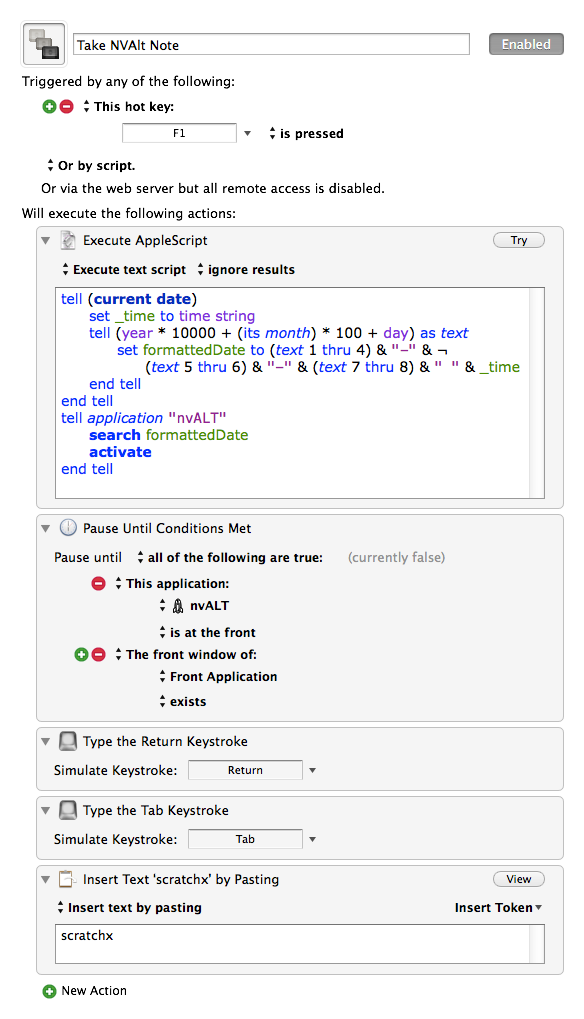

Note that the filename matching is done case-insensitive. The above example would exactly match the files This is the link.md, This is the link.markdown and This is the link.txt. Such an exact match can be found in two ways: First, if the contents of the link (in the above example "This is the link") exactly matches a filename, excluding its extension, the appropriate file will report that it is indeed an exact match. This means that it tries to find a file that reports that the content perfectly matches it. First, it will try to find an exact match of the link's contents in the app. If you Cmd or Ctrl click a link, it will trigger two distinct functions.

Zettlr also includes such a system.Īn internal link is written with the syntax of ].
#NVALT GENERATE UNIQUE ID FROM DATE HOW TO#
Once the problem of Identification was solved, another occurred: How to link files across the app without jeopardising the above-mentioned aims of Zettlr to make files application-independent? Many apps, such as nvALT or The Archive implement an internal linking system that makes it possible to reference files from each other to make navigation through the system as easy as possible. This way, even in long files, if you can't find the ID, simply drop a new ID on top of the file to make this assume the role of a general ID for the file. If there is more than one valid ID in the file, the first ID will take precedence. If it has found an ID that is not encapsulated by a Wiki link (more on that below), it will assume this ID internally to refer to the file. Zettlr will automatically try to find an ID for a file by searching through its contents. Also, our own experiences show that when one doesn't use easy-to-recognise IDs, one is less prone to assume stuff, making them better suited to cross-link files. The default ID is a good call, because it uses the date in the format YYYYMMDDHHMMSS, which is unique to the second. Take a look at the Settings page to see options on how to customise all Zettelkasten functionality to your liking. The ID will automatically be highlighted for you. To add an ID to a file, simply press Cmd/Ctrl+L to generate one, or, if you prefer to do it manually, simply type an ID yourself. The solution we came up with is to simply bury IDs somewhere in the text. Metadata is way less standardised than the Markdown syntax itself, making it hard to imagine how that could work together with the philosophy of Zettlr. Of course there have been approaches to integrate headers into markdown files, but this really was not the way to go, because this would jeopardise the rule of Zettlr to write agnostic markdown files. The second difficulty is offered by the format itself: Markdown files are plain text and therefore don't allow for all too much metadata to be added. But these depend on the paths, and, as Zettlr is designed to work even with cloud-saved files, the path on one computer will not be the same as on another computer, making the hash unusable as an ID. Internally, Zettlr uses 32-Bit hashes to identify specific files.

One of the biggest problems in writing apps that try to leave files untouched with app-specific stuff is that you need a way to identify files. Three functions are currently available in Zettlr to kickstart your Zettelkasten: The basic idea, therefore, is to let you create relationships between small notes (or, for that matter, also long files) that enable you not only to move back and forth between files, but also to identify relationships that emerge in your files. This was a way for Luhmann to reference back and forth between a set of cards and, as the box filled up with more and more cards, allowed it to somehow get "alive", showing him connections between certain concepts that he himself had not thought about. The numbers could be used to locate other cards with other information that was in some way related to the content of the card. Originally, the method stems from the German sociologist Niklas Luhmann, who, in an effort to remember everything he's ever read or thought, designed his own (back then analogue) Zettelkasten containing cards with some information and numbers on them.
#NVALT GENERATE UNIQUE ID FROM DATE SOFTWARE#
The problem back then was that most of the software did not really succeed in implementing it, but since, there has been a lot of effort put into integrating the method, so that nowadays there are more and more applications that support some functions of this method. We tested a lot of different styles and workflow ideas, and one that stuck was the Zettelkasten method. The idea to write Zettlr came to my mind several years ago, when we were trying to elaborate on good workflows for academic writing.


 0 kommentar(er)
0 kommentar(er)
